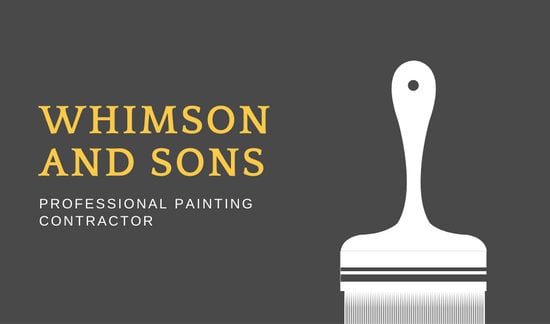Stay Clear Of Usual Blunders When Paint: Dos And Do N'ts
Stay Clear Of Usual Blunders When Paint: Dos And Do N'ts
Blog Article
Composed By-Bailey Otte
Ensuring a flawless paint job entails greater than just grabbing a brush. From surface prep work to application strategies, there are common challenges that can hinder the end result of your paint job. By understanding the dos and do n'ts, you can elevate your results and attain a specialist coating. Let's check out several of the vital errors to avoid when tackling your following painting venture.
Correct Surface Area Preparation
Completely preparing the surface before painting is essential to guarantee a smooth and long-lasting finish. Correct surface area prep work is the structure for an effective paint work.
Begin by cleaning up the surface area to eliminate dirt, grease, and other pollutants that can impact the paint's bond. Use a mild cleaning agent and water remedy, followed by washing and enabling adequate drying time.
Next off, examine the surface for any cracks, holes, or imperfections. Load these with a suitable filler and sand them down until smooth.
After fixings, it is vital to prime the surface area. Guide aids the paint adhere better, enhances color uniformity, and supplies added protection. Choose painting company near me for the surface area material and the type of paint you'll be using. Allow the primer to dry entirely before applying the paint.
Lastly, consider fining sand the topped surface gently to make sure a perfectly smooth base for the paint application.
Selecting the Right Paint
Efficient choice of the proper paint is crucial for attaining an effective and long-lasting paint task. When choosing the ideal paint, consider elements such as the surface area to be repainted, the space's feature, and the preferred finish.
For interior painting, latex paints are often preferred as a result of their longevity, simple clean-up, and reduced odor. On impressions group homes reviews , oil-based paints are better matched for high-moisture locations like bathroom and kitchens.
Selecting the right surface is additionally crucial. Flat paints are optimal for ceilings and wall surfaces with flaws, as they hide defects well. https://residentialpaintersnearme76543.mdkblog.com/39721531/home-painters-a-newbie-s-guidebook-for-changing-your-home and eggshell coatings offer a minor luster and are simpler to clean up, making them suitable for high-traffic locations.
For exterior painting, acrylic paints are generally made use of for their weather condition resistance and flexibility.
In addition, bear in mind the paint color and its impact on the space. Lighter shades can make an area feel more large, while darker tones add coziness. Always evaluate a tiny location before devoting to a shade to guarantee it complements the space's lighting and decor.
Application Techniques
When it concerns painting, understanding appropriate application techniques is important for attaining a smooth and professional surface. One basic technique is to ensure that the surface area to be repainted is clean and properly prepared. This includes sanding harsh locations, completing openings or fractures, and applying guide if needed.
Making use of the right tools is additionally vital. Quality brushes and rollers can make a substantial difference in the final outcome. When using a brush, use paint in smooth, also strokes in the direction of the wood grain or in long vertical strokes for walls. For rollers, work in convenient sections and roll in a zig-zag pattern to prevent visible roller marks.
Preserving a damp side is one more important strategy to avoid lap marks. This suggests keeping a wet edge of paint as you work to blend each new section perfectly with the previous one. Additionally, when applying numerous coats, make certain each layer is completely completely dry before applying the beside protect against peeling or splitting.
Grasping these application techniques will aid you accomplish professional-looking cause your paint jobs.
Conclusion
In conclusion, avoiding usual painting blunders is necessary for attaining a professional finish. Skipping surface prep work, using the wrong type of paint, and hurrying the application process can all negatively effect the outcome of your task.
By following correct strategies and making the effort to prepare, choose the best paint, and apply it properly, you can ensure an effective paint job with long-term outcomes.
